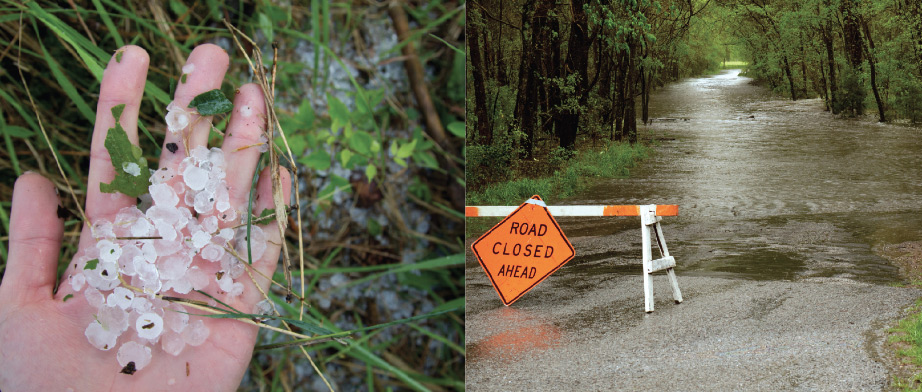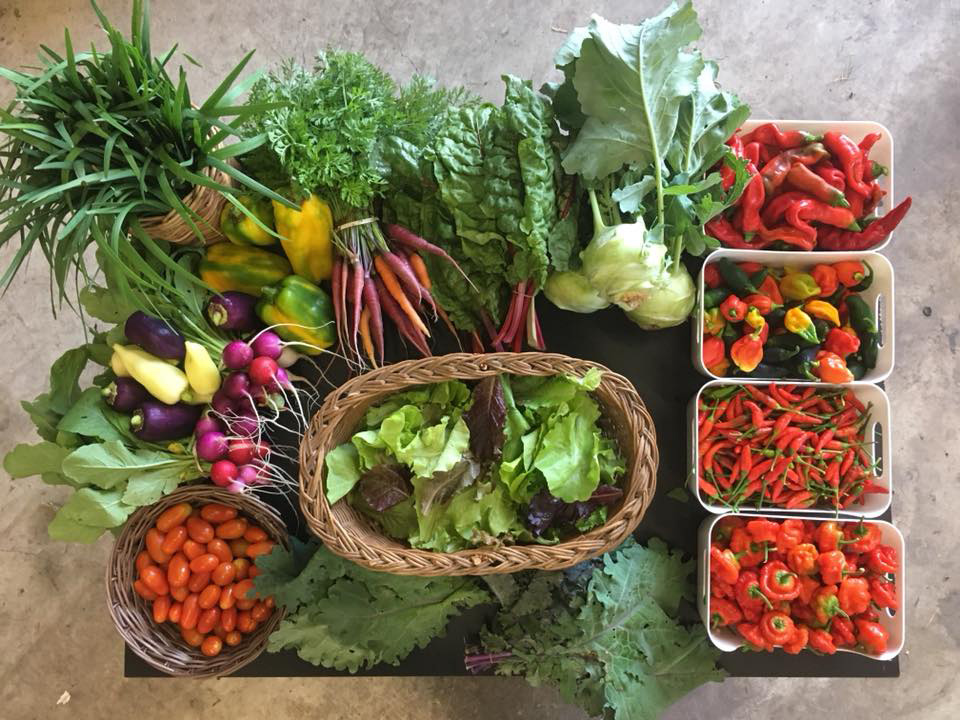
Mother Nature may not be stoppable, but the effects of her actions can be managed by employing some of these strategies.
Extreme summers can plunge us all in a hot dusty wake of cracked earth, or alternatively, torrential downpours. During one severe drought several years ago, our rural nursery’s water well declined and concentrated with salt, so much so that it poisoned container saplings and trees on its drip irrigation. While my husband and workers ditch-witched trenches in hard-baked earth for pipes to a better water source, my young daughter and I dragged hoses seemingly the length of football fields, heavy and cumbersome with water, in and around hundreds of container trees to individually hand-water them while the new system was built, which took a couple of weeks.
Drenched with sweat and sunscreen, coated with dust, mud, scrapes and bug bites, in soaring temperatures even in the morning and evening hours, I felt like a despondent character in a gray-tone dust bowl photo. Did I mention I was eight months pregnant? That was really not fun.
Years of lovely gardening memories dilute that, but extreme weather patterns are simply becoming the norm worldwide, in heat waves, blizzards, drought, flood, hurricanes, wind and hailstorms. The game of gardening guarantees nothing, which enhances joy when you do succeed with a productive, aesthetically pleasing garden. But to succeed, gardeners need a combination of luck and learned skills to play with the mother of all opponents, Mother Nature herself, and her extreme mood swings.

Extreme heat and drought
Texas’ sweltering summer heat is no surprise to anyone who’s survived here more than one summer. Harder to predict is whether moisture will accompany it. When lacking, water restrictions may kick in, so even beer gardens find themselves in dry counties.
Given a choice, always select drought-hardy or “water saver” plants. Flowers you love from that vacation to Martha’s Vineyard will DIE here from heat alone, despite coddling. Go native, and even better, go Superstar plant selections adapted for Texas heat (texassuperstar.com), and use earth-kind gardening techniques, which focus on soil preparation and sustainable practices that ultimately make gardening easier and more successful (aggie-horticulture.tamu.edu/earthkind). Plant veggies adapted to heat like okra, cowpeas, squash, sweet potatoes and certain lettuces.
Preserve and use water efficiently. Mulch bare soil and install drip irrigation beneath to deliver moisture to roots, avoiding evaporation; many simple-assembly options are available online or at stores. Use nozzle or spray hoses that shut off as needed. Collect rainfall in containers for landscape use or container watering. Run sprinklers manually to best control how much is really needed and where. Water during the cooler morning/evening times, and avoid wind to reduce evaporation. Find more water-saving ideas at Howard Garrett’s website, Dirtdoctor.com.
Heavy rains
Too much of anything isn’t good. Heavy rains can cause erosion, fungus, spreading of fire ant mounds, emergence of snakes and tarantulas and root rot of prized plants. While rain lies beyond human control, some things can be done to help garden projects. Keep garden soil slightly moist at all times, so contrast lessens when heavy rains occur. If heavy rains are coming, pick tomatoes and other self-ripening fruits close to maturity and let them ripen inside. Apply beneficial nematodes, orange oil, molasses and compost tea to organically evict spreading fire ant mounds. Sprinkle cornmeal on garden soil, or spray a 1:10 mix of hydrogen peroxide: water on plants and trees to help control fungi.
Wind and hail
Hail is perhaps the most discouraging of all extreme weather because it’s completely unpredictable and hard to prepare for. Arriving in spring or summer, hail starts when strong, warm updrafts lift drops of rain high in the atmosphere, turning them to ice, then mixing them with cold downdrafts traveling to warmer air layers where they partially melt, then rise again in an updraft to add another layer of ice. Once they are too heavy to remain afloat, these ice balls fall as hail, usually accompanied by severe thunderstorms. Weather forecasters can predict thunder and rainstorms, but can’t always predict hail accurately. In most cases, people get a few hours’ notice at the most.
Insurance might cover a shattered windshield but not garden plants, and the first glimpse of a garden after a hailstorm can be heartbreaking: flowers crushed and deadheaded, productive plants with broken stems or limbs stripped of produce and pummeled, even tough agave and cacti riddled with pockmarks and holes.
It can be hard to assess whether storm damage is permanent, so don’t tear up the garden right away. Young plants with shredded leaves are probably goners, although older ones may sprout new growth within a week or two and return. After hail damage, fertilize plants with a diluted fish emulsion solution and spray leaves with seaweed extract foliar spray to stimulate growth hormones and promote healing. After a week, if new growth emerges, the plant will likely survive. Prune broken parts, remove casualties, and carry on.
Frosts
Frosts play fair in that they’re usually predicted. Weather forecasters use terms “light frost” (32-38 degrees, tolerated by many plants), “heavy frost” and “hard freeze” (below 28 degrees, lethal to most). Move plants indoors if possible, or cover with linens or frost cloth light enough to “float” atop plants without damage. However, you may need to use weights or ties in stormy weather.
Highly evolved gardeners prepare or build frames of PVC pipe or such to cover plants or garden beds. These can be quickly covered with cloth or tarp for many varieties of extreme weather such as hail, frost, wind or even intense temperature/sun or pest problems.
By Josie Seeligson









0 Comments